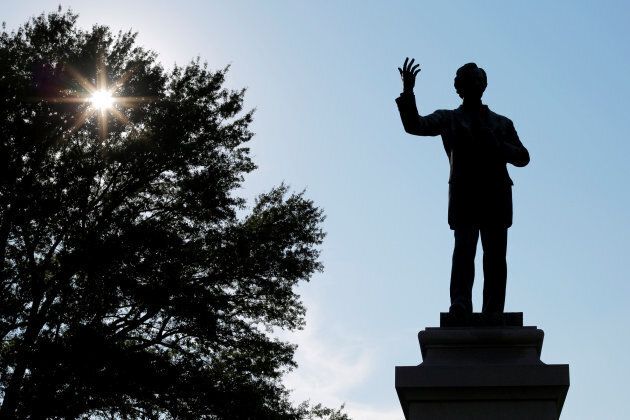
The backlash was swift, and seemingly devoid of thought. The Hudson's Bay Company quickly removed a plaque from its downtown Montreal store that was initially erected in 1957, dedicated to Confederate President Jefferson Davis, a Mississippi slave owner, who supported slavery and white supremacy.
The retail store supplied no reason for the unceremonious removal, but complaints about the plaque came after the recent attack in Charlottesville, Va., where a rally that turned violent was held to preserve a monument of American Civil War General Robert E. Lee.
The historical record is clear: Confederacy was about slavery and white supremacy, nevertheless here in Montreal, the plaque should have remained to remind us of our intertwined history with the U.S. We can express outrage over its continued existence. We can alter it with statements of our own. Or we can let it remain and reflect carefully on its history. Notwithstanding, its removal, though somewhat abrupt, should have served as the foundation for a truly teachable moment foiled on account of seeming mismanagement.
The ensuing debate becomes complicated, raising serious questions and concerns about the United States and its history with Canada, especially Montreal.
Between 1861 and 1865 a civil war was fought between the United States of America and the Confederate States of America, a collection of eleven southern states that left the Union and formed their own country. The Southern states wanted to break away from the north and continue to use slavery. The North was antislavery. Jefferson Davis, President of the Confederate States of America was defeated by the United States in 1865, followed by the nationwide abolition of slavery.
On account of shoddy record-keeping, exact numbers are not known, but it is estimated that about 40,000 Canadians and Maritimers served in the war. Despite sympathy for the Confederacy, most fought for the North.
At the start of the war, what is now Canada was made up of the British colonies of Canada West and Canada East (now Ontario and Quebec), and the Maritime colonies of Nova Scotia, New Brunswick, P.E.I and the colony of Newfoundland. Both Canadians and Maritimers were aware of the looming threat of the United States annexing or invading them, and owning all of North America. These factors had caused Canadian and Maritime politicians to consider strengthening the weaker colonies by joining them into a richer, bigger and more defendable unit.

The Civil War, for what it signified, made the threat of American invasion more likely, while the number of political leaders who were anxious to cut support for the North American colonies increased. The time for, unification or Confederation had arrived.
The Civil War ended in 1865 with many Canadians and Maritimers undecided regarding support for Confederation. In 1866, a group of Irish-American Civil War veterans called Fenians crossed the border in armed attempts to take Canada hostage in exchange for Ireland's independence from Britain. The Fenian Raid failed, but brought home to Canada a stark reminder that the U.S posed a threat to Canadian sovereignty and how vulnerable Canadians were.
While removal of the Confederation plaque is now a fact, our history should remain intact.
Support for Confederation was strengthened. On July 1, 1867, Confederation came together just as the United States was clearing away the ashes of civil war, although Canadians would call the holiday Dominion Day until 1982. Canada was now an independent country.
President Jefferson Davis came to Montreal after battling through a civil war to consolidate the United States as a unified nation, while in Canada we successfully united as a nation without gunfire. Removal of the plaque is an unacceptable act. We do not need to be influenced from afar to remember that the creation of Canada was influenced by the American Civil War. Jefferson Davis may have resided here, the reason being his story (history) to share. While removal of the Confederate plaque is now a fact, our history should remain intact.
Also on HuffPost: